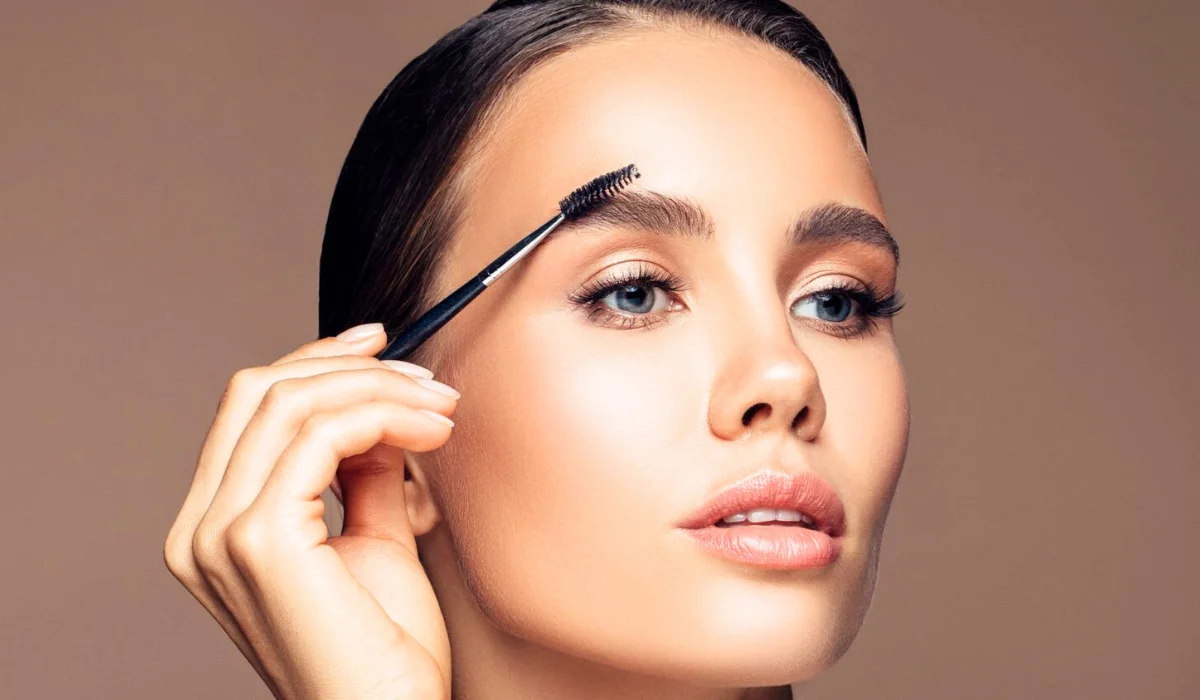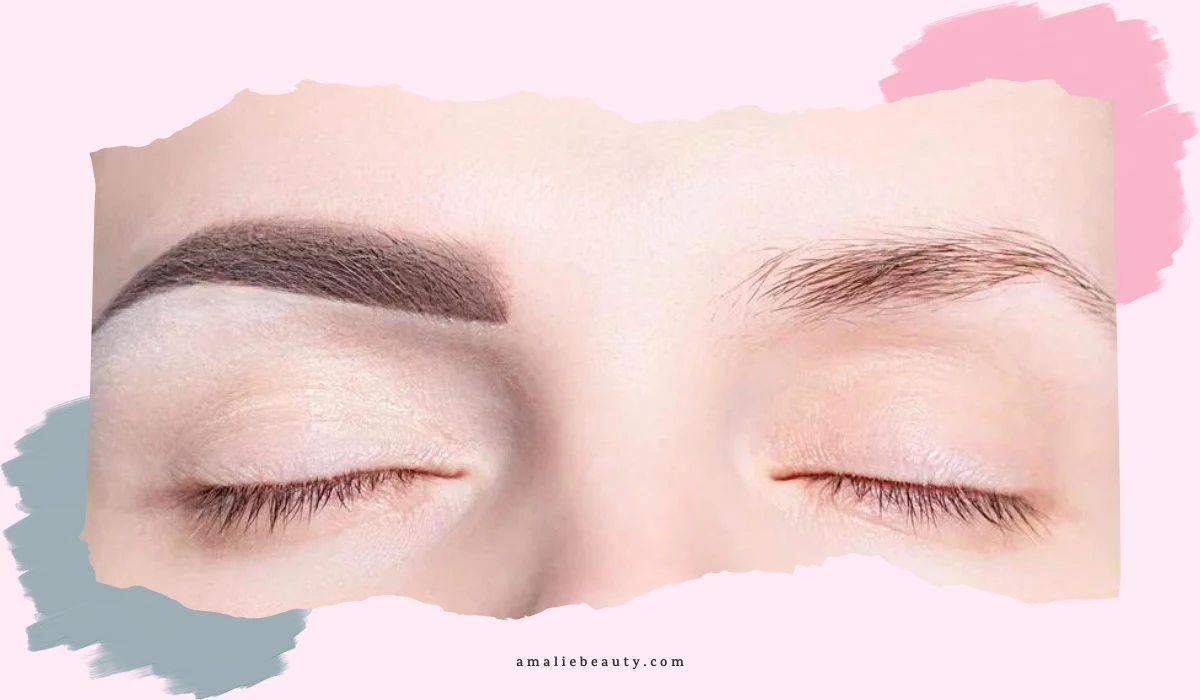Eyebrows are the punctuation mark of one’s expressions. Arching towards confidence, this strip of hair right above the eyes has the silent superpower to add functionality and aesthetics. But a single shaving mistake or even a health setback can take this facial charm away.
Eyebrow loss is a common but disturbing sight; however, the brow hair grows back naturally in the course of a few months. Keep reading to know exactly how long it takes, plus tips and tricks for fast growth.
Do Eyebrows Grow Back?

Yes, eyebrows generally can grow back after they have been removed or lost naturally. Like all body hair, eyebrows go through the natural growing cycle, passing through phases like:
- A growing phase, aka anagen.
- A transition phase, aka telogen.
- A resting/shedding phase, aka catagen.
For eyebrow growth, age, and genetic factors also play an important role. As people age, the growth may naturally slow down, however not for everyone. Also, some people genetically grow thicker eyebrows at a faster pace than others. However, while eyebrows do grow back, the process and growth may vary amongst individuals.
How Fast Do Eyebrows Grow Naturally?
Various factors influence the natural growth (timing) of eyebrows and can vary among individuals.
Although every experience is different, on average, eyebrows typically grow at the rate of 0.14 to 0.16 millimeters per day. The numbers may appear very slow to hair growth at other body parts, but there’s a natural cycle behind it. Here’s an overview of the different stages of the eyebrow hair growth cycle:
Anagen Phase: This is the active phase of growth that lasts for 30 to 45 days. During this phase, the eyebrows grow to their pre-set limit, and hair follicles are at their active growth phase. This duration may differ for everyone and is largely dictated by one’s genetic and nutritional intake.
Catagen Phase: This is the transitional phase that lasts for 2 to 3 weeks. In this process, hair follicles begin to shrink and detach from the blood supply and cells that produce new hair.
Telogen Phase: This is the last phase, also known as the resting and shedding phase. This stage lasts for 2 to 3 months, where eyebrow hair falls out, making room for new hair.
The total eyebrow hair growth cycle takes roughly around 4 to 5 months. The eyebrows start showing noticeable growth from about 1.5 to 2 months. However, the growth may vary depending on age, genetics, overall health, nutritional intake, or whether the eyebrows were shaved/ plucked.
While there’s no guarantee to speed up this process, maintaining a healthy lifestyle and using topical products might help.
Also Read: Is Shaving Eyebrows The New Trend For 2024?
Common Reasons to Lose Eyebrows
Multiple factors may contribute to shed/ lose eyebrows. Here is a quick overview of some popular/common factors:
- Over Plucking: Plucking the eyebrows excessively can cause permanent hair loss. Even if not, this behavior isn’t safe, and hair follicles may take more than the natural time to regrow the eyebrows.
- Waxing: Eyebrow waxing is known to damage hair follicles, leading to thinning or loss of brow hair.
- Aging: With age, the eyebrow hair growth cycle may slow down naturally, affecting their regrowth.
- Medical Treatment: Certain medical treatments may leave side effects associated with eyebrow loss. Some of the common treatments include Chemotherapy, Radiation therapy, Hormone therapy, Immunosuppressive medicines, Antidepressants, and Anticoagulant medicines.
- Skin Conditions: Certain skin conditions like eczema and areata affect the hair follicles, causing hair loss.
- Hormones: Hormonal fluctuation during pregnancy or menopause affects the thickness of eyebrows.
- Autoimmune Disorder: Conditions like lupus or thyroid may affect eyebrow hair growth.
- Injury or Trauma: Burns, injuries, or physical trauma can damage hair follicles, hindering the growth of eyebrows.
Causes of Slow Eyebrow Growth
A range of internal and external factors can make eyebrows grow at a slow pace:
- Genetical factor.
- Aging, as older individuals experience changes in the hair growth cycle.
- Inadequate nutrition affects hair growth.
- Underlying health conditions such as thyroid, jaundice, and more.
- Medications that have a side effect on hair growth.
- Chronic stress.
Ways to Grow Thicker Eyebrows Fast
Growing thicker eyebrows naturally requires a combined approach of a balanced diet, proper care, and smart habits. Here are some tips and tricks that may help in promoting fast eyebrow growth:
- Take a balanced diet, ensuring adequate intake of Vitamin A, C, E, and Biotin. Include more fruits, vegetables, dry fruits, nuts, and seeds in your diet.
- Drink adequate water throughout the day to keep the hair follicles and overall body hydrated.
- Use castor oil to gently massage your eyebrows for a few minutes every day twice. Using it regularly is known to promote eyebrow hair growth, and it may even work wonders on eyelashes.
- Apply natural oils like coconut oil, almond oil, olive oil, etc on your eyebrows and leave it overnight. Massaging them gently before the overnight nourishment with contribute to faster growth and a fuller appearance.
- Allow your eyebrows to grow naturally and avoid overplucking, especially when you are focusing on growth.
- Apply fresh aloe vera gel on your eyebrows and leave it for an hour before washing. However, always do a patch test before.
- Brush your eyebrows regularly using a clean, tiny brush to distribute natural oil and stimulate blood circulation.
- Apply the beaten egg yolk to your eyebrows and leave it for 20 minutes before washing.
- Include iron and biotin supplements into your routine after consulting with a healthcare professional.
- Try eyebrow serums available in the market.
Conclusion
The journey of growing back eyebrows requires a combined approach of nutrition, healthy habits, care, and patience. Our eyebrows grow 0.14 to 0.16 millimeters per day, and thus, being patient throughout the journey and not expecting magical growth is extremely important. To speed up the process, there are always some ways/ approaches available.
Also, when trying to regrow eyebrows, avoid waxing, plucking, shaving, or threading them. Allow the natural growth to spread around before you try to shape the brows. However, if the concern persists, seek advice from a dermatologist for tailored guidance.

